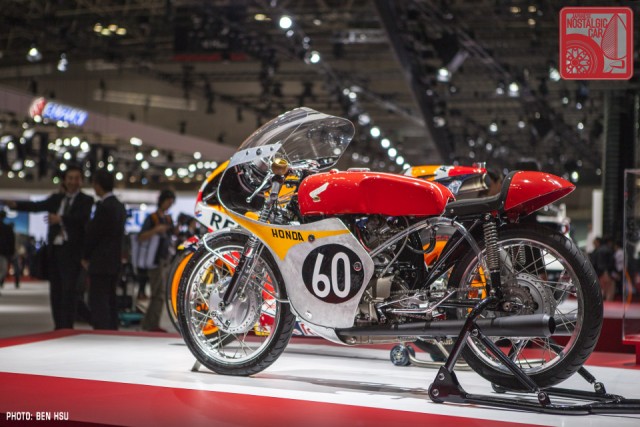
Though the exciting debuts of the Tokyo Motor Show have been covered, you didn’t think we’d go all the way to Tokyo and and not show you around, did you? Here’s what it’s like to attend the press days of the maddest Motor Show on Earth.
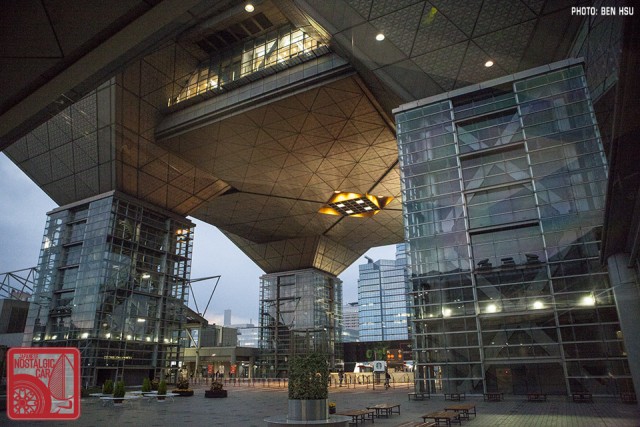
The convention center where the Motor Show is held is called, no joke, Tokyo Big Sight. With four upside-down pyramids on glass pillars, it is just one of many mind-blowingly futuristic buildings on the man-made island of Odaiba that sits in the middle of Tokyo Bay.
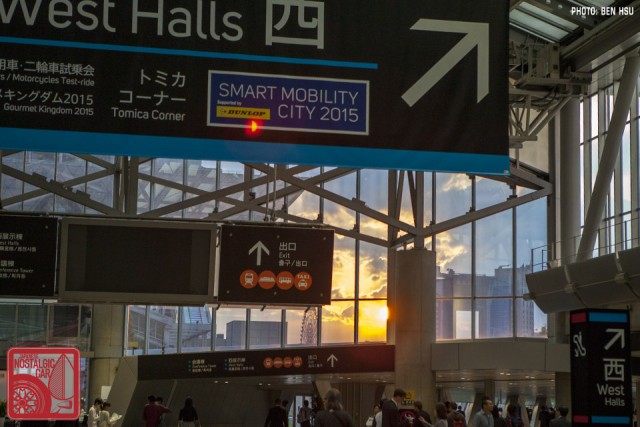
Seriously, this is what all the buildings on Odaiba look like. That’s the Telecom Center with the big hole in it. To the left, the Daikanransha, once the world’s tallest ferris wheel, adjacent to Toyota’s MegaWeb showroom. It’s not hard to feel like you’ve set foot in Tomorrowland, which makes it the perfect setting for the Tokyo Motor Show.
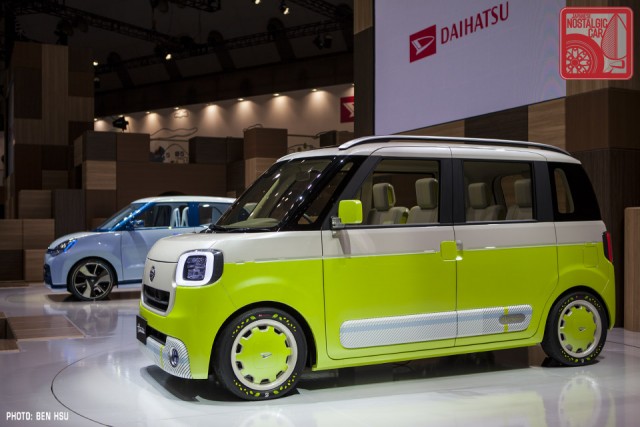
And honestly, your childhood visions of future transportation were likely of tiny, light-footed runabouts, not high-riding 7-seater crossovers that look like they can go off-road but can’t. In other words, exactly the type of kei cars that populate Tokyo’s streets.
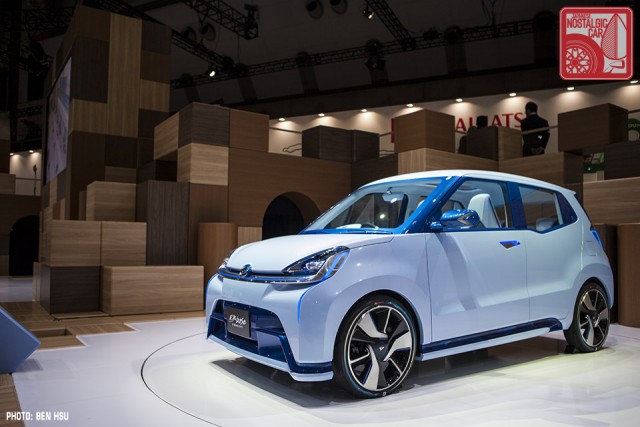
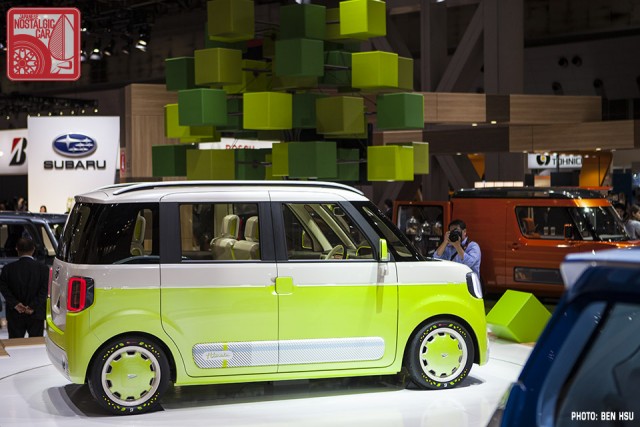
Toyota’s small car subsidiary Daihatsu absolutely killed it with their display this year, which made you feel like you were in, alternately, a real life toy box of wooden blocks or an 8-bit Nintendo game.
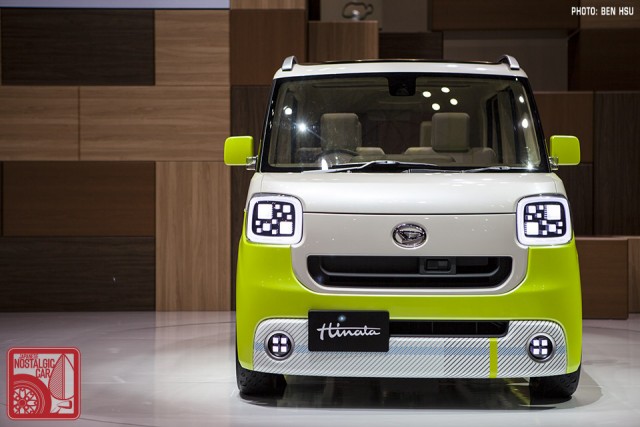
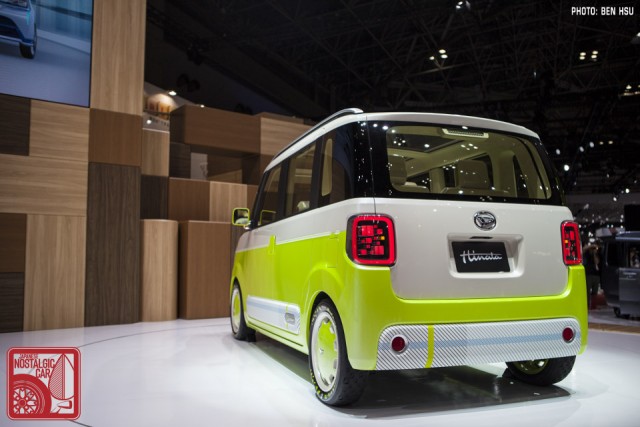
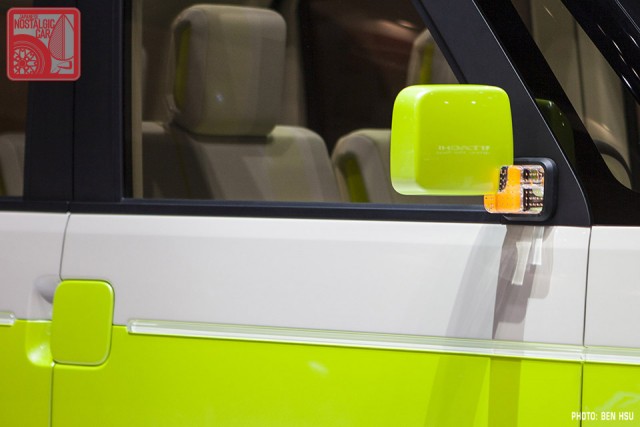
People say Japanese car designers have lost their edge. Clearly, they’re just using it all on kei cars. The Daihatsu Hinata — whose name means “sunny place” in Japanese — is nothing but charm. Look at the headlights! Look at the taillights! Look at the mirror mounts that double as turn signal lights! The door handles even mirror the mirrors, and there’s plaid on the seats and on the exterior. You cannot not love this thing.
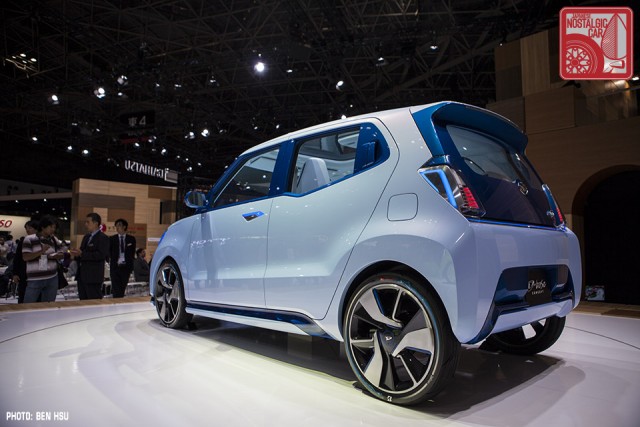
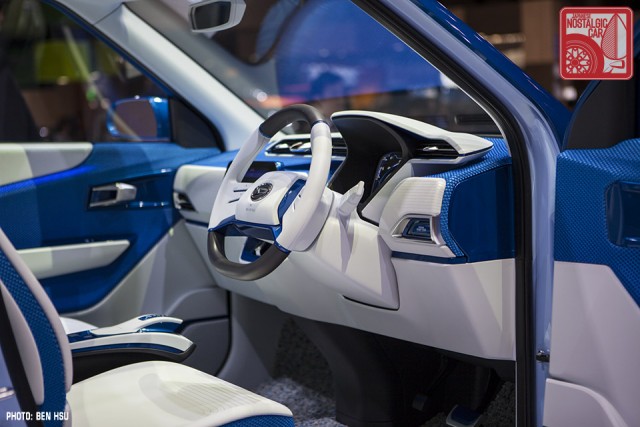
Though unfortunately named, the Daihatsu D-Base is, like the Hinata, masterful at color coordination. Thankfully it’s main purpose is not to corrupt you morally, but to serve as a preview for the next-gen Mira. As fans of interiors that are not tan/black and matched to the paint job, we wholeheartedly approve.
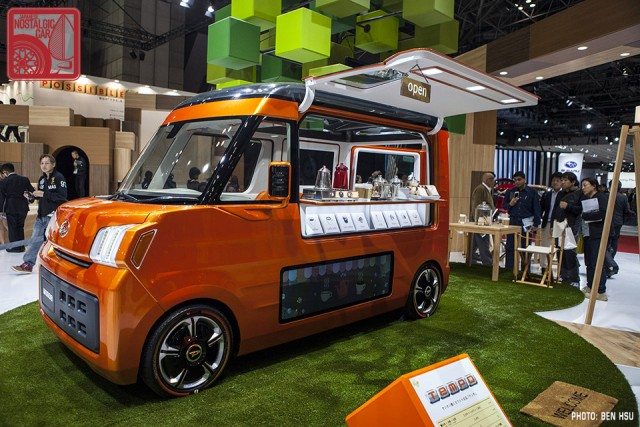
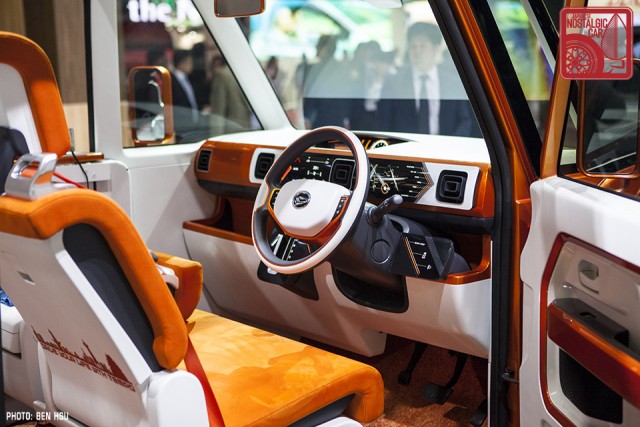
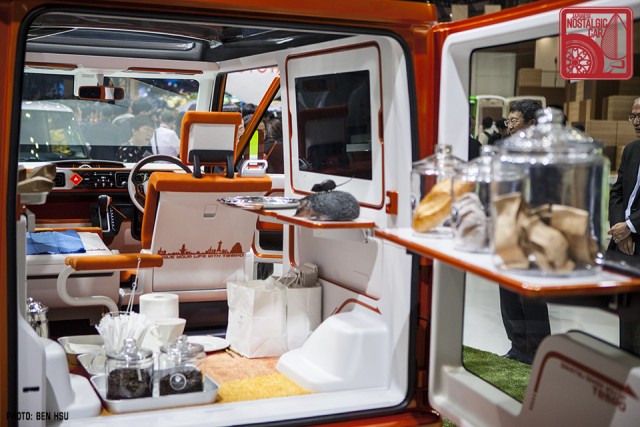
The Daihatsu Tempo (not to be confused with the 1980s Ford compact) was a kei-based food truck. The entire side opened up with a fold-out counter and flatscreen signs to advertise your wares. The demo was selling the most Japanese food of all — French pastries. The willpower required not to eat one of those croissants after running around Big Sight all day was indescribable.
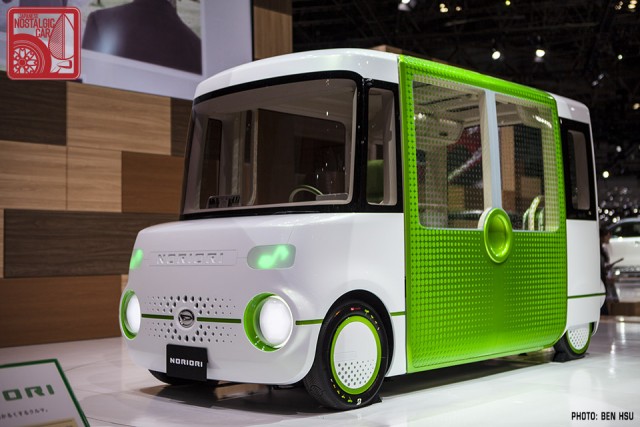
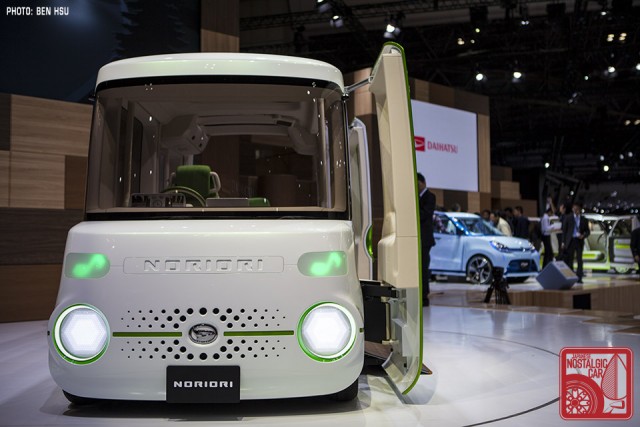
One of the coolest cars at the show, right after the big sports car debuts, was the Daihatsu NoriOri. “Nori ori” means “get on, get off” in Japanese, and the car was designed to be as friendly as possible to wheelchair users. Also, it has music notes for turn signals.
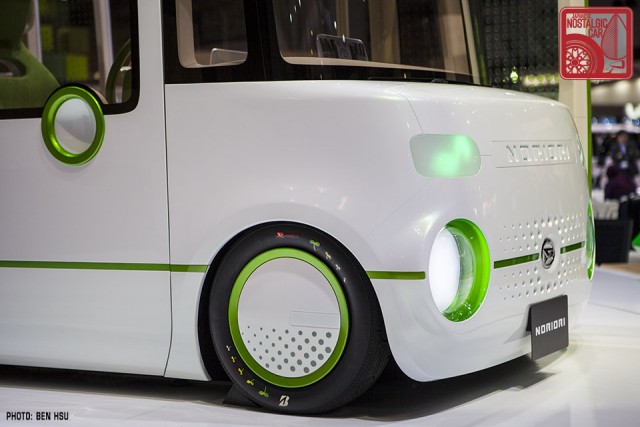
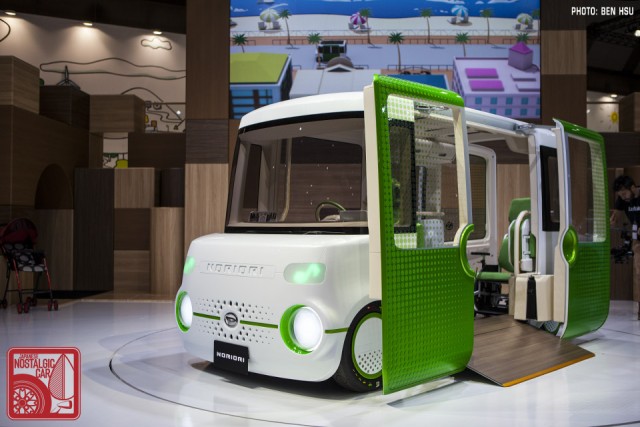
Ramps fold out from the side through sliding suicide doors, and from the rear when the entire back end swings open like the door on a giant fridge. Again, color coordination is on point, and the gradient circle pattern is repeated on the doors, windows, grille and wheels. And yes, that is an 8-bit side-scroller-style video playing on the screen behind it.
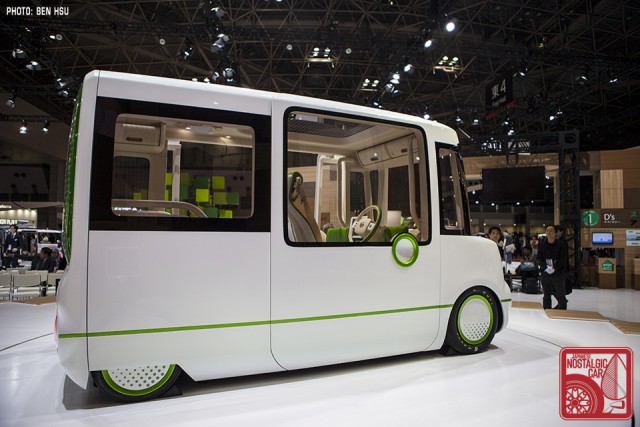
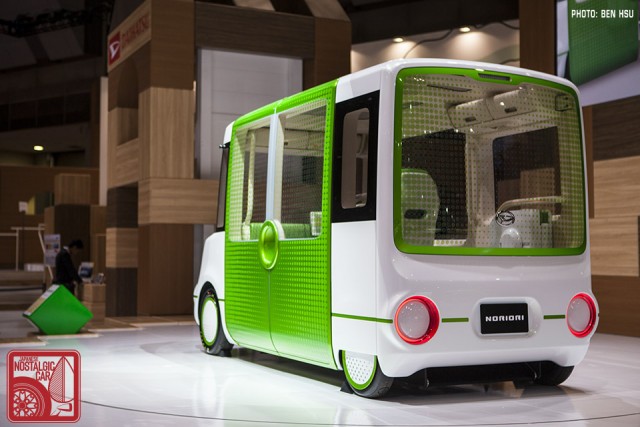
The coolest thing about the Noriori, however, is that it comes pre-shakotan‘ed, with tucked rears and Skyline taillights. If there was any hope of this selling in the US, it would be the JNC shop van today.
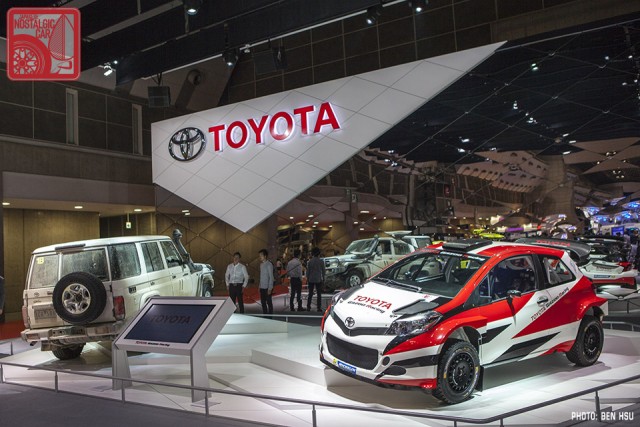
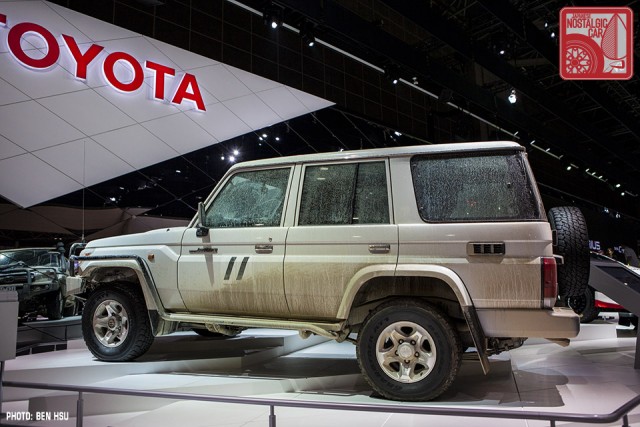
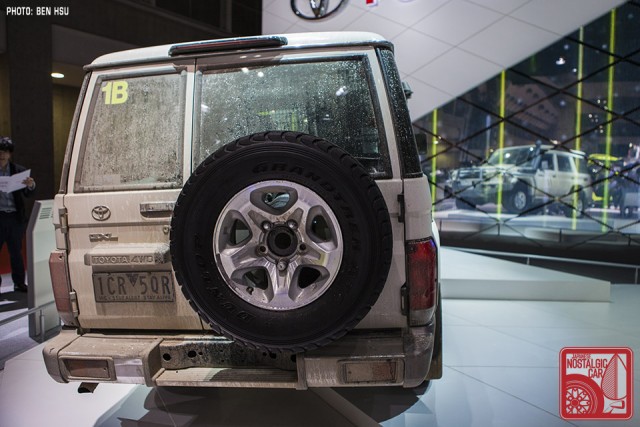
Moving onto the parent company, Toyota displayed a couple of well-used off-roaders, including a Yaris WRC car and an Australian Toyota Land Cruiser 70-Series. It’s yet another vehicle we desperately want but can’t have.
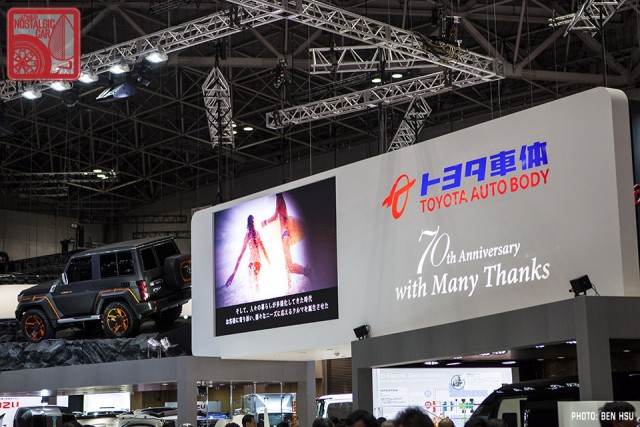
One of the things that Tokyo does differently than any other auto show is allow suppliers and subsidiaries to have their booths right next to the OEMs. These companies are usually subsidiaries of a more recognizable automaker but operate as separate institutions.
Toyota Auto Body, for example, was originally a factory that was spun off to specialize in the construction of trucks and commercial vehicles, including the Land Cruiser, Hiace, Estima and Alphard. Today they have four plants and a R&D center and are celebrating their 70th anniversary with a concept short wheelbase Land Cruiser of their own.
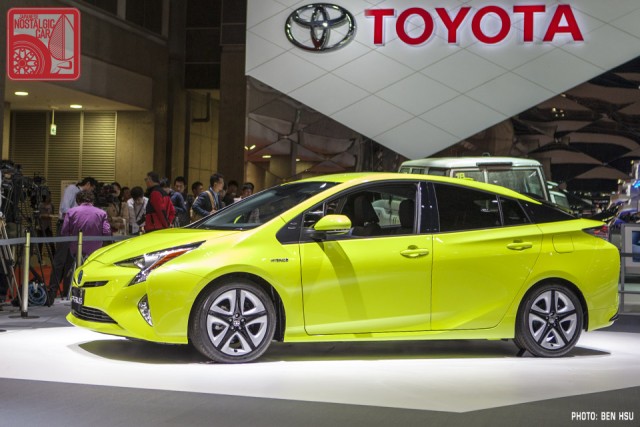
The new Prius was unanimously described as hideously ugly by Americans, but every Japanese person we spoke to liked the design. We’re not talking about its merits as a fuel saver, though being eco-conscious and a motorhead are not mutually exclusive concepts in Japan. They actually like its styling. Our informal poll included an gearhead artist known to every regular JNC reader and the editor-in-chief of a well-known vintage enthusiast car magazine familiar to every JCCS goer. They also liked the Mirai. Clearly there is a cultural divide here.
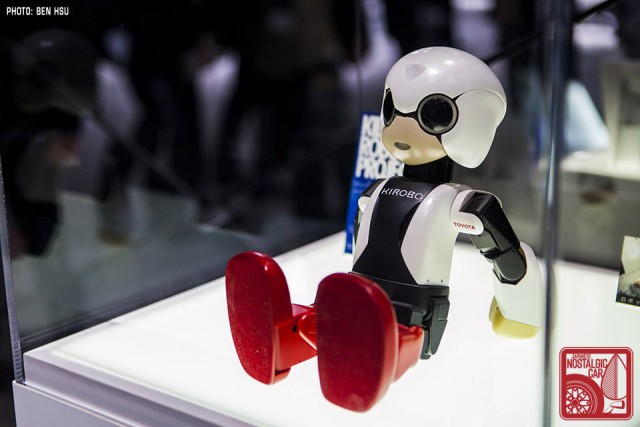
It wouldn’t be Japan without the presence of a robot and Toyota showed its very own Astro Boy, which it actually launched into space. Its name is Kirobo (a pun using the the word kibo, which means “hope” in Japanese), it can read your emotions, and its voice and movements are straight out of your favorite anime.


If that wasn’t cute enough, Toyota has gone and developed a Kirobo Mini, which is the size of an apple and lives in its own little pouch. Its ultimate goal, other than to lower humanity’s defenses to a Skynet takeover via cuteness, is to hone an AI that will one day be in your car. Imagine, your very own KITT.
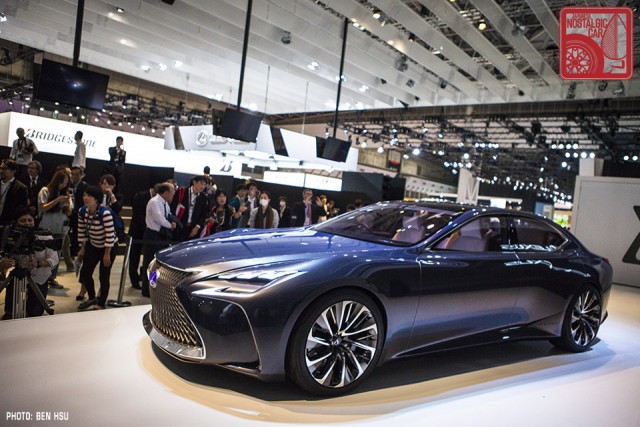
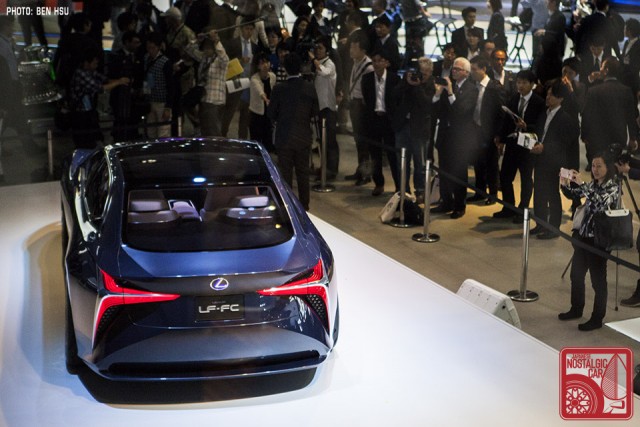
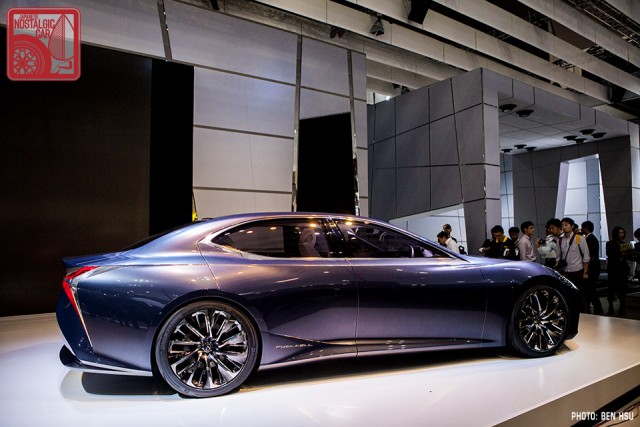
Lexus showed off the LF-FC Concept, an impossibly long, sleek sedan that is said to preview the design of the next-generation Lexus LS. Thus far we have not loved the new Lexus LFA-inspired spindle-grille design language, but man, this thing looks pretty darn sexy. Like Syd Mead partnered up with head designer from Lexus’s studio on Naboo (This is the last Star Wars reference, we promise).
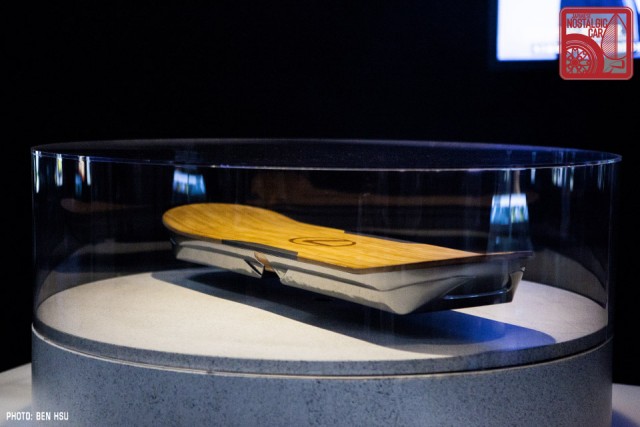
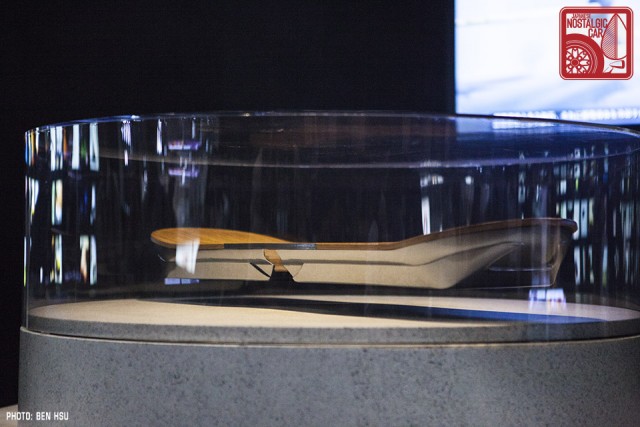
While we were in Japan, Back to the Future Day happened. While the US had blacked out Tacomas, Toyota of Japan showed an actual hoverboard.
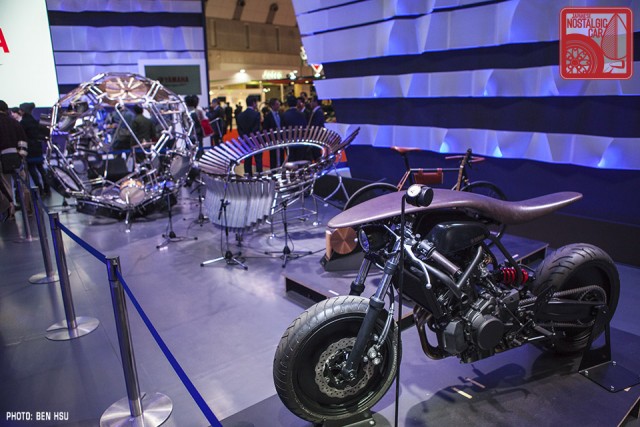
Yamaha showed off not only a mid-engined sports car and a weird surfboard-motorcycle hybrid thing, but some musical instruments worthy of the Mos Eisley cantina (We lied).
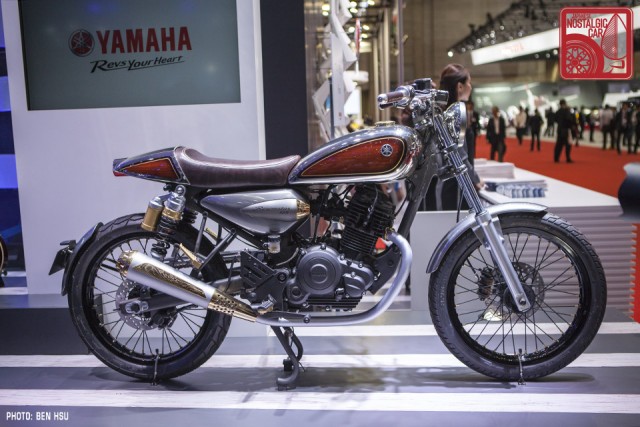
The Yamaha Resonator 125 is a bike built with the craftsmanship that goes into its musical instruments. Beautifully steampunk-ish, Yamaha says it is meant to “strike an emotional chord.” Ha, get it?
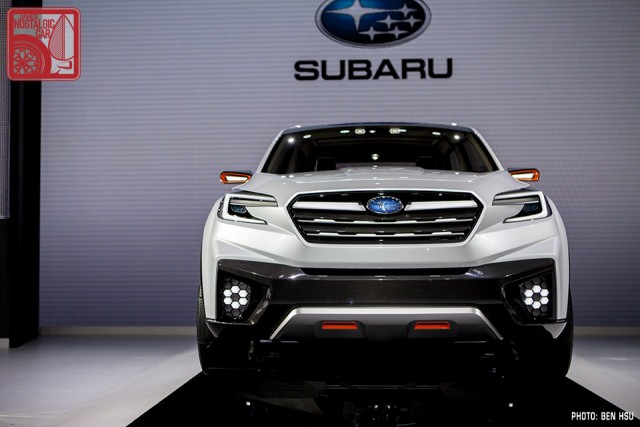
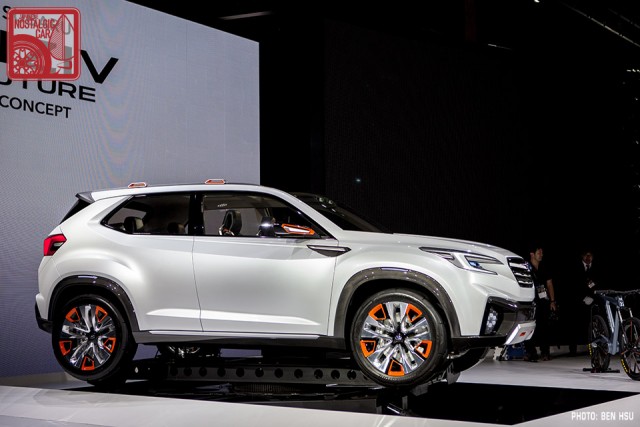
The Viziv Future is what Subaru thinks the SUV of tomorrow will look like.
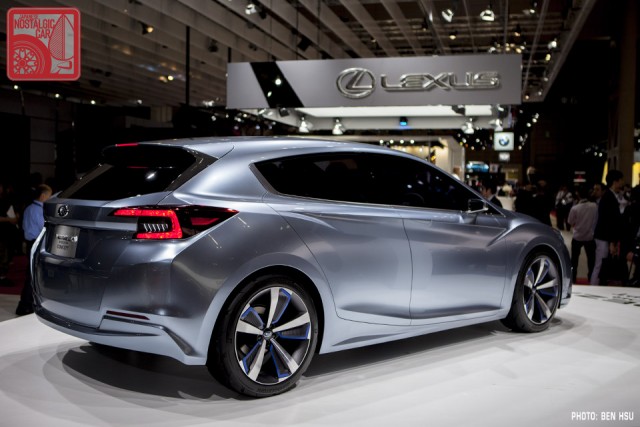
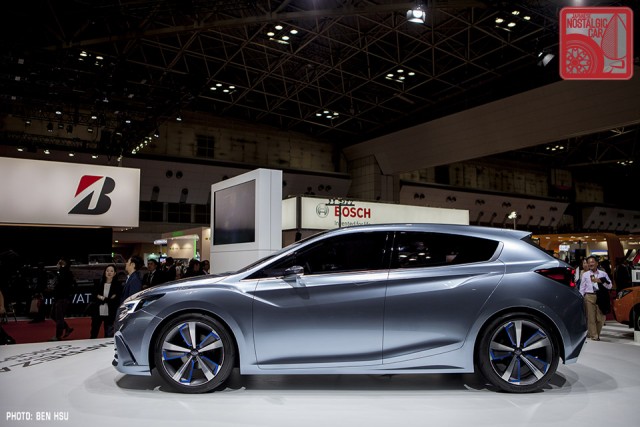
Much more interesting was the Impreza 5-Door Concept, which hints at the direction of the next Imp wagon.
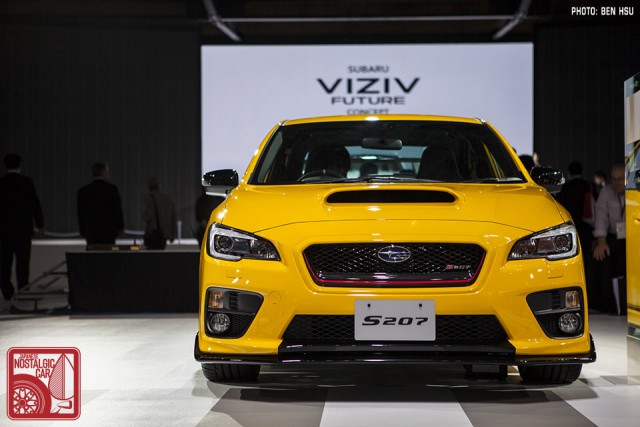
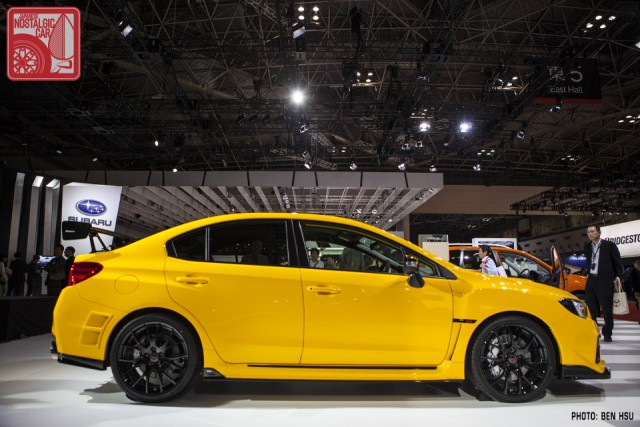
We wanted to include the Subaru WRX STI S207 in the “The Death of the Japanese Sports Car has been Greatly Exaggerated” article, but it’s technically not a sports car. It is, however, aiming to be “the world’s most enjoyable vehicle,” according to Subaru. Not the fastest, or the one with the best ‘Ring time, just the most enjoyable!
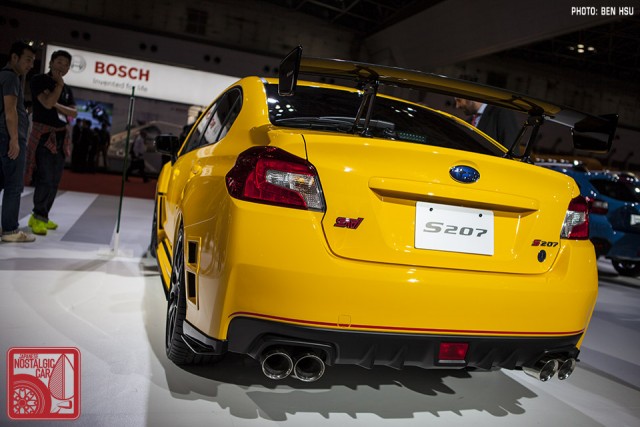
It has 18 more horsepower than the standard USDM STI, 20 brake caliper pistons, tighter steering, something called Dampmatic II, , and active torque vectoring. Only 400 will be made, but none of that matters because it won’t be sold in the US.
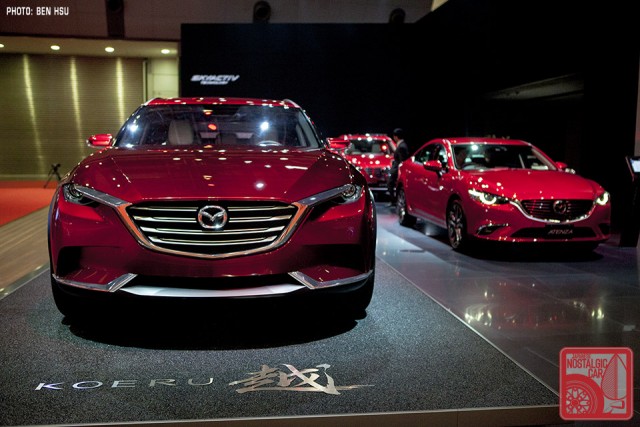
Mazda stole the show with the RX-Vision, but Tokyo was also the Japan debut of the Koeru concept. Meaning “to go beyond,” it was largely thought to be a glimpse of the next CX-9 when it was unveiled in Frankfurt. Mazda spokesmen tell us this is not the case, but it still looks great in person.
To give you a sense of how massive Toyota is, everything shown in this article so far except the Big Sight itself is either part of the Toyota family or part of a company partnered with ToMoCo. That’s how big the Big T is.
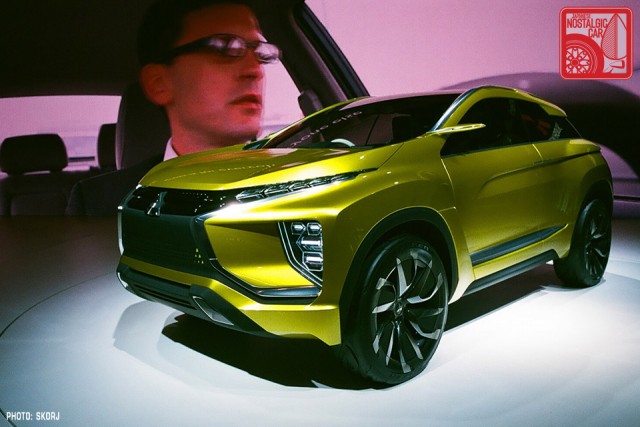
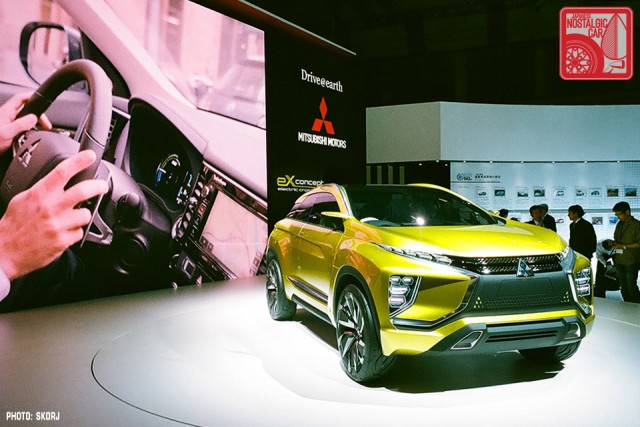
That leaves companies like Mitsubishi Motors fending for itself in a quickly consolidating auto industry. This bionic bullfrog-looking thing is the eX Concept, an electric crossover.
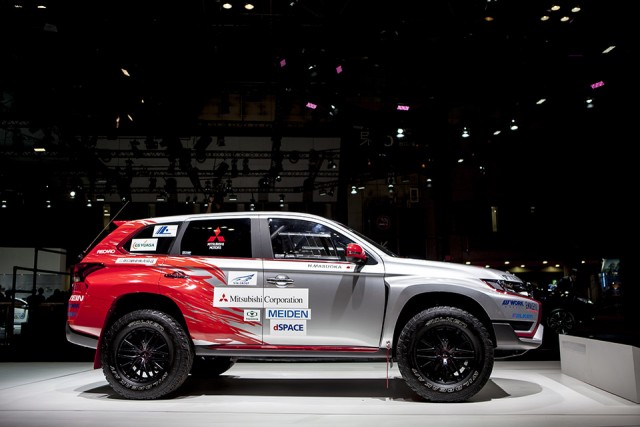
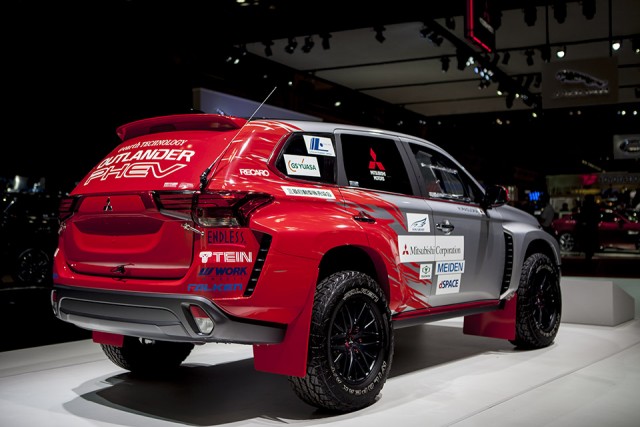
Much cooler was the Outlander PHEV rally racer, also electric, that competed in the Baja Portalegre 500 and was driven by Hiroshi Masuoka, a factory Mitsubishi driver who won the Paris Dakar rally back-to-back in 2002-03. The Portuguese event is known as a precursor race to the actual Dakar Rally, giving hope that perhaps Mitsubishi is planning to re-enter the famed rally that it once dominated.
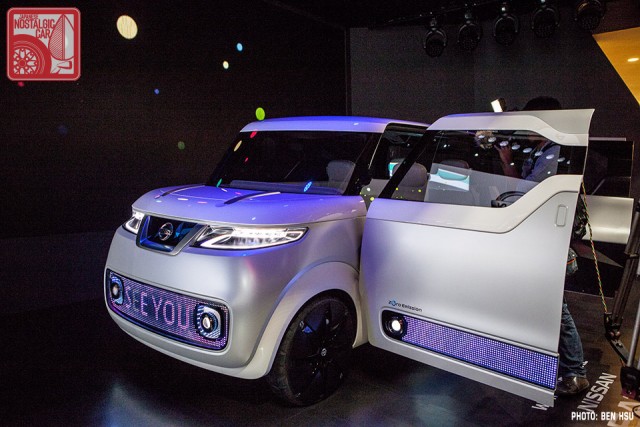
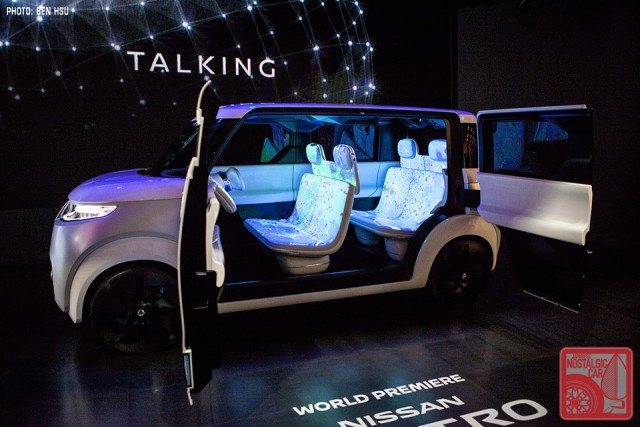
Mitsubishi and Nissan also have a partnership, created a couple of years ago, to build kei cars. The Nissan Dayz is one of the results, which the Teatro for Dayz Concept is based on. It’s a kei car in which every available surface is a screen.
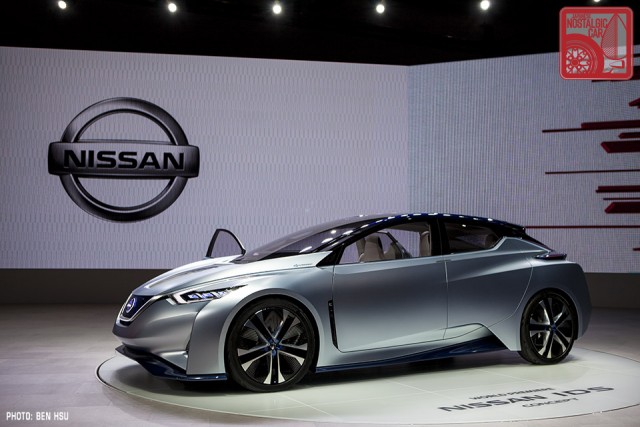
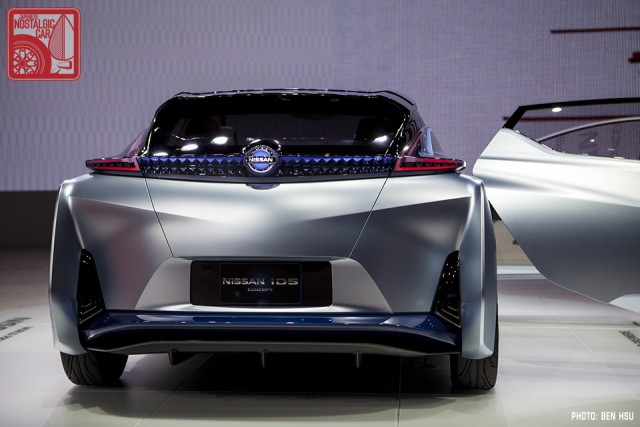
The big reveal from Yokohama, however, was the Nissan IDS, not to be confused with the IDx, which it revealed two years ago at the same show. Though the names sound similar, the inspiration could not be further apart. The IDS is a self-driving car that provides the experience of “relaxing in a living room,” according to the company.
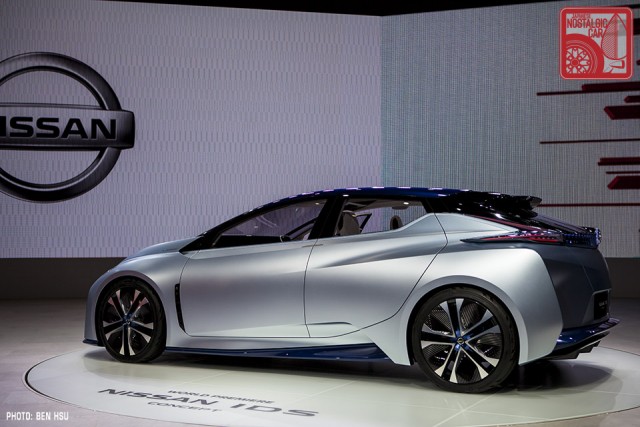
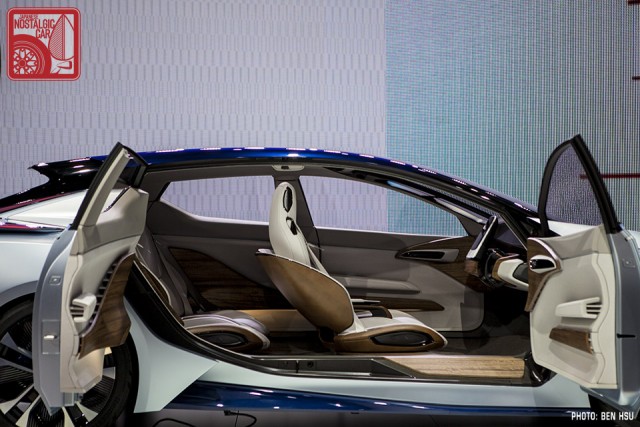
It is, of course, electric. CEO Carlos Ghosn says Nissan will have autonomous cars on the road by 2020. Now that sounds like fun, doesn’t it?
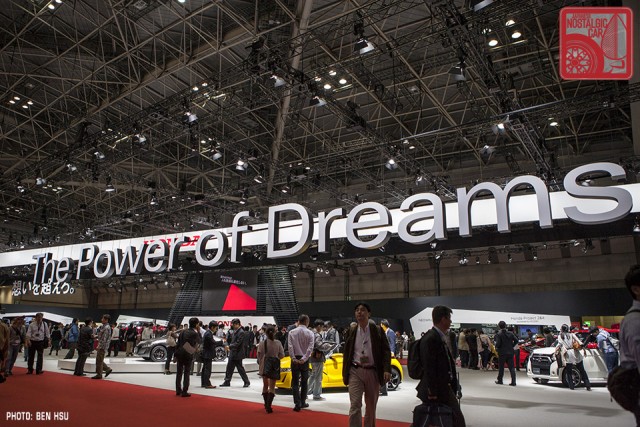
Honda’s booth was colossal, taking almost the entire length of one hall. Walking under the “The Power of Dreams” sign was like crossing into an amusement park of motorized fun.
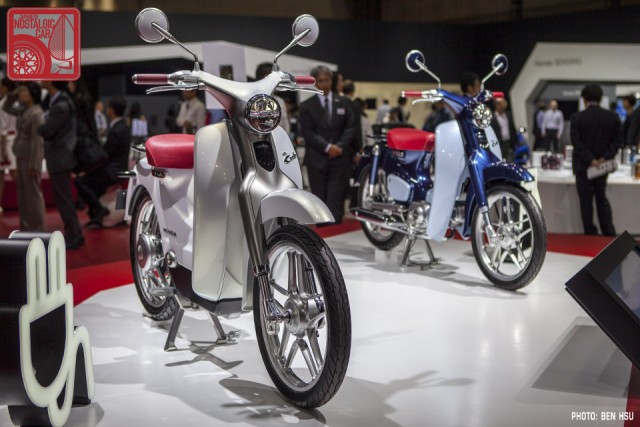
The Honda Cub is still one of the most prolific bikes on Japanese roads today, having seen continuous production since its introduction in 1958. If you’re not careful, you’re still likely to get buzzed by a red and white one with a Japan Post mail carrier at the reins whizzing through the country’s narrow streets. The next iteration will be the EV Cub, an electric version that you can plug in and charge at home with a standard wall socket.
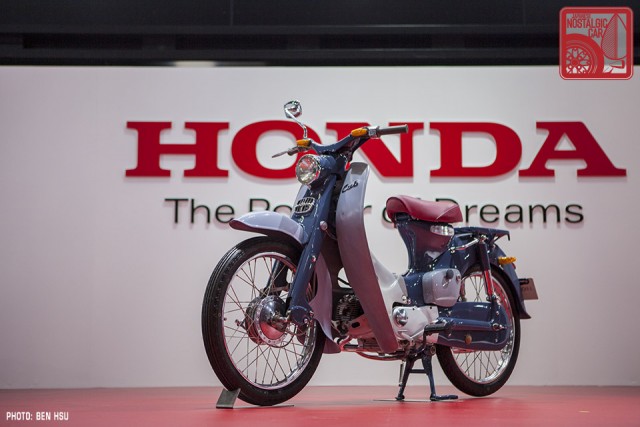
Forget the NSX, the Type Rs or ASIMO. The Super Cub is likely Honda’s greatest invention. As a reminder of where it all started, Honda displayed a classic Super Cub in the most painfully nostalgic of colors front and center before their logo.
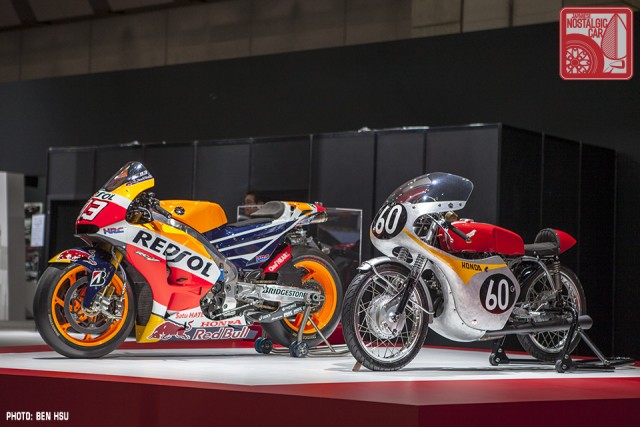
Nearby, a restored 1959 Honda RC142 race bike looked fast even as it was parked. The twin-cam, multi-valve, 2-cylinder 125cc bike marked Honda’s entry into motorsports 56 years ago when it debuted at the Isle of Man TT. Beside it stood a modern MotoGP bike, the RC213V.
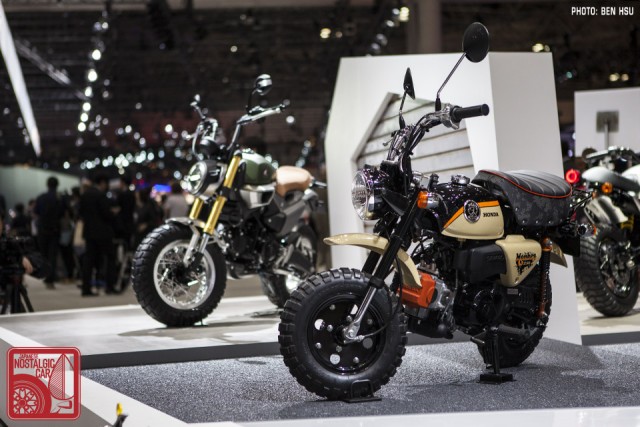
Honda also showed off a close-to-production Monkey bike in cool vintage colors. Like the Super Cub, the Monkey is a staple of the Honda line. The prototype just refers to its brown-tastic paint job in what is likely yet another limited edition version.
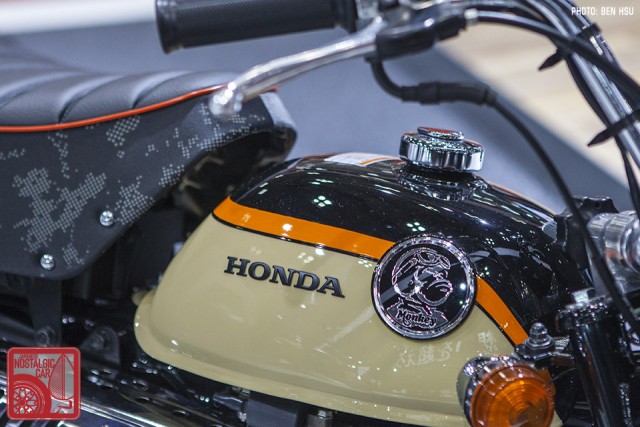
The entire bike is about as tall as a footstool, but perhaps its most endearing trait is its emblem — a primate in aviator goggles.
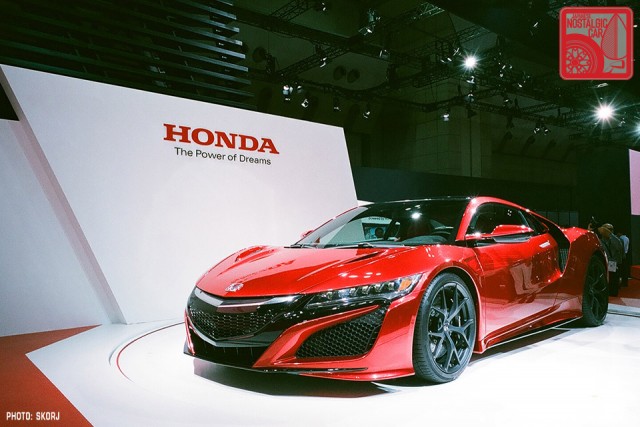
The span of Honda’s products is truly breathtaking. On one end you have the Monkey. On the other, the NSX. Scattered throughout were Indy Cars, F1 cars, and probably a speedboat somewhere. It’s a shame there was no room for the HondaJet.
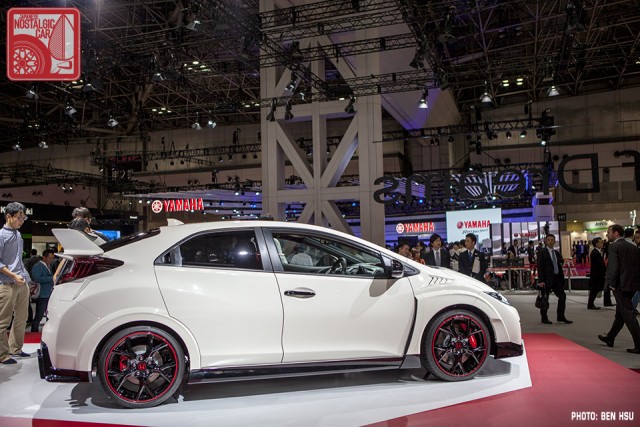
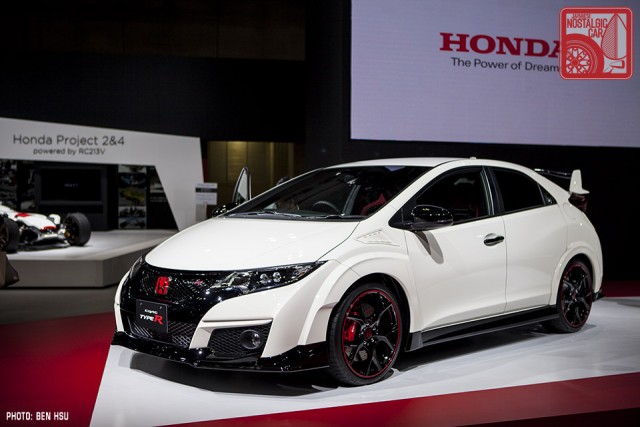
Like the Subaru S207, we wanted to include the Civic Type R as further evidence that the Japanese sports car wasn’t dead, but technically it’s a sedan. A brutish 306 horses from a turbo 2.0, a 6-speed transmission and Brembo brakes sound like fun, but we wonder if it’s in the same in spirit as its 1990s predecessors where lightness and balance were the goals. It’s coming to the US, so time will tell.
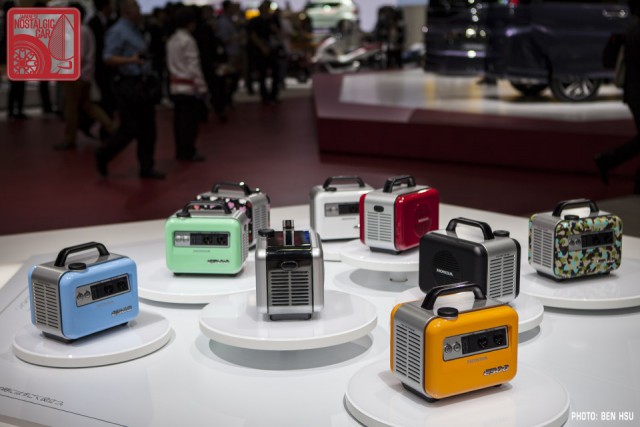
Of course, Honda also makes generators and such, and their latest power source was the E500 battery inverter. Ever since the 2011 Tohoku earthquake and tsunami, emergency power supplies have been an important market for Japan. But not only is this little thing handy for charging electronics and such, it is also beautiful. Resembling a vintage radio, it comes in a variety of colors and patterns. Even the display, with each rotating on its own stand, was mesmerizing.
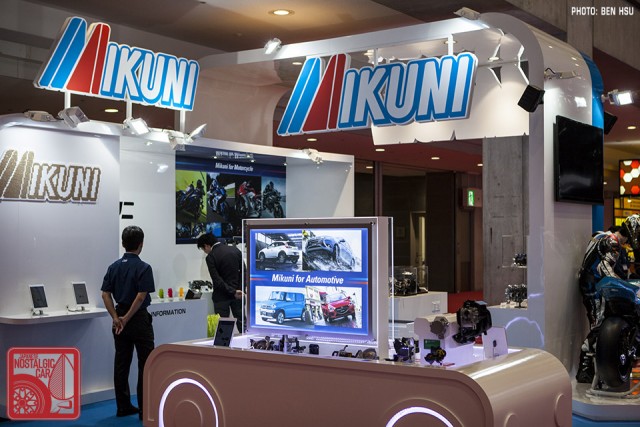
Mikuni had its own stand, but alas, there were no carburetors anywhere to be seen. Today, they are mainly a supplier of components such as electronic throttle bodies and variable valve timing systems.
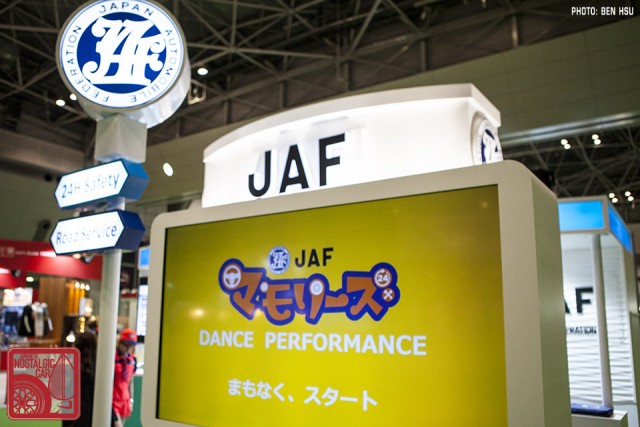
The Japan Automobile Federation is the equivalent of AAA, but is better in every way. Does AAA hold its own dance performances?
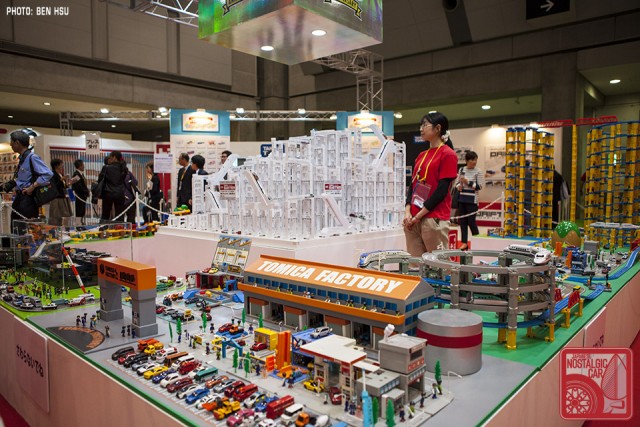
No Japanese event would be complete without a shipload of commemorative goods to drain your wallet. It was Tomica’s 45th anniversary and they had an enormous minicar playset display to rival Metropolis II.
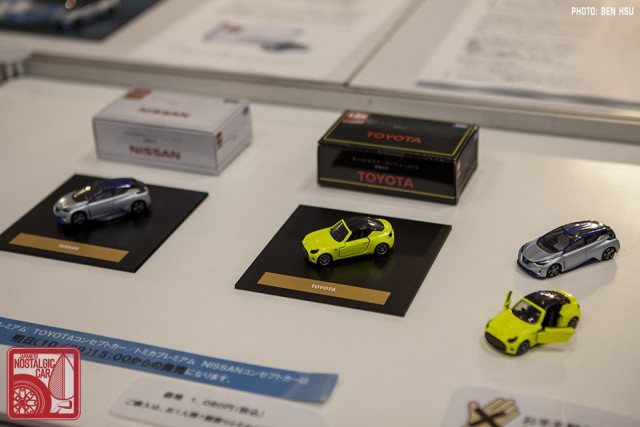
Each year, Tomica issues 12 special edition models exclusive to the Tokyo Motor Show, each casting chosen to represent one of the 12 domestic automakers. This year saw the addition of two premium models depicting the Nissan IDS and Toyota S-FR.
The catch, however, was that the normal castings (¥700 each) were limited to three per person while the premiums (¥1,050 each) were limited to one per person. Technically there was nothing preventing you from getting back in line and buying more. Except for the length of the line, that is.

You didn’t think that was it, did you? In addition to a bunch of mugs, pens, shirts and tote bags emblazoned with the general 2015 Tokyo Motor Show logo, each automaker created a bunch of exclusive and limited merchandise representing their marque.
Isuzu’s, for example, included diecast models of the Giga and traditional maekake work aprons emblazoned with the old school Isuzu logo. There were two different versions, one reading (roughly translated), “The Customer is Most Important” and the other reading “Quality is the Most Important.”
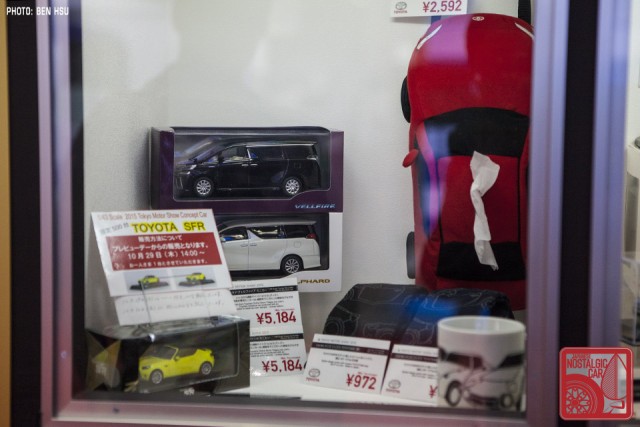
Toyota’s goods included a mug with a 2000GT and Sports 800 on it, Alphard and Vellfire models, 86 socks, and a 1:43 scale S-FR Concept of which only 500 were made. I couldn’t help myself and bought the 86-shaped tissue box cozy.
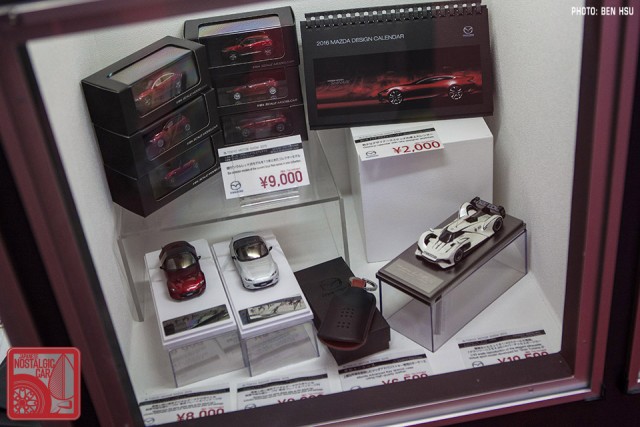
Mazda’s lineup included a desk calendar, key fob, and a bunch of models of everything from the Mazda Demio to the ND MX-5 to the LM55 Vision Gran Turismo concept, all in Soul Red or white, exactly on message, and coordinated with the display or real cars at their booth.
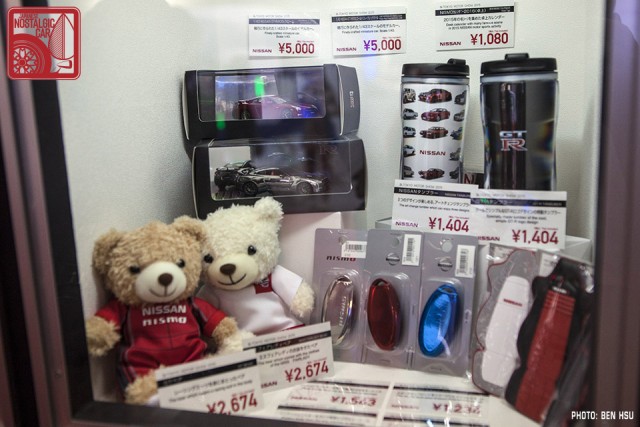
Nissan’s selection was as uninspiring as their real display, with some generic-looking tumblers, teddy bears, and racing seat-shaped cellphone holders.
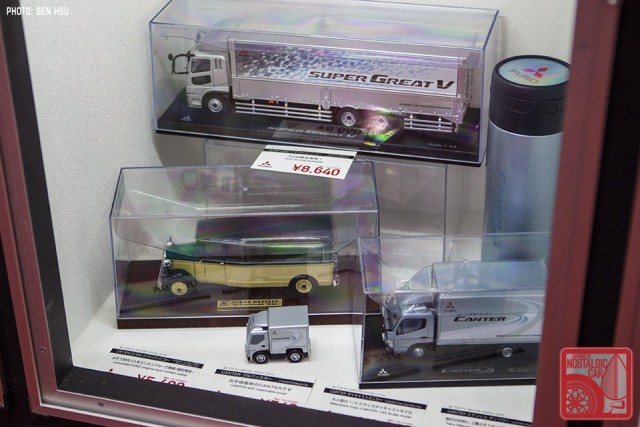

Mitsubishi Fuso offered a thermos and a bunch of model trucks, including the Canter, the Super Great V, and the first Fuso vehicle, a 1932 bus.
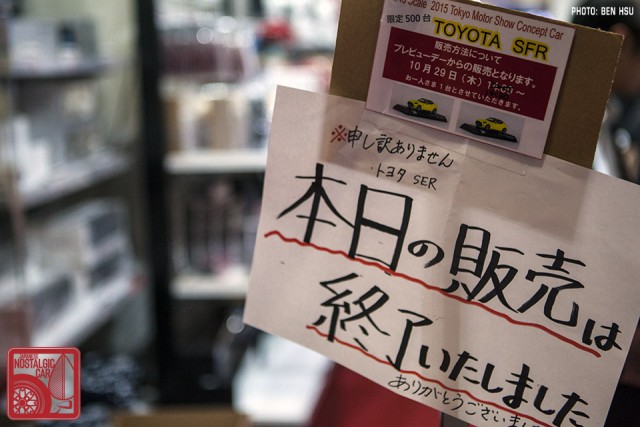
Three hours after the sale began, a handwritten sign was posted at the shop indicating that all 500 of the 1:43 Toyota S-FR models had sold out (at least that’s when we noticed the sign, it could’ve been earlier). That’s Japan for you, though; everything is simultaneously excessive and rare.
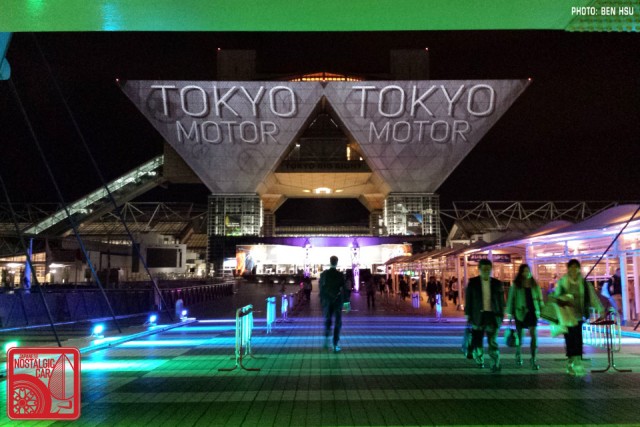
It was dark when we left, giving Big Sight the opportunity for a light show. Cars and logos were projected onto the pyramids while the long walkway leading up to the building was bathed in an ever-changing glow of colors. What does it have to do with cars? We have no idea, but it’s part of the spectacle that makes Tokyo the greatest Motor Show on Earth.



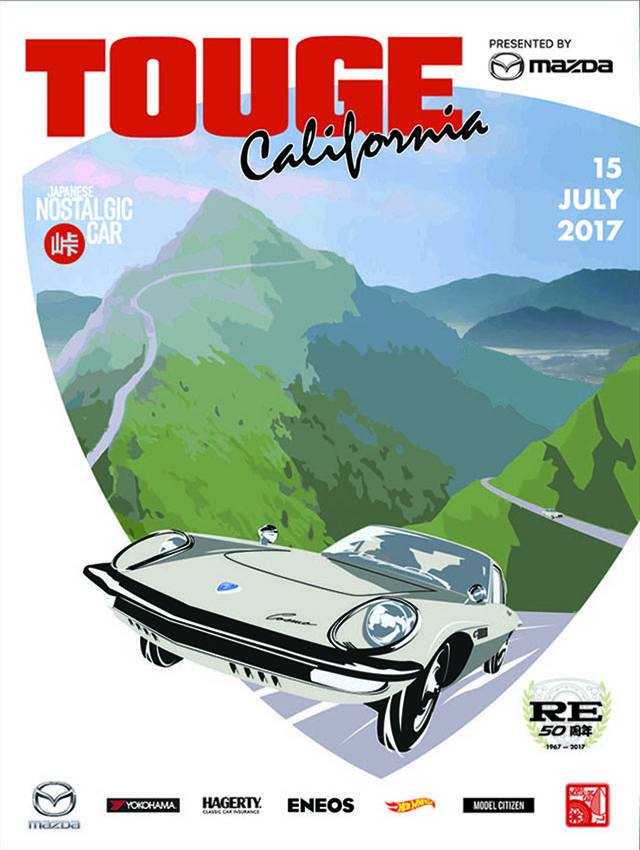
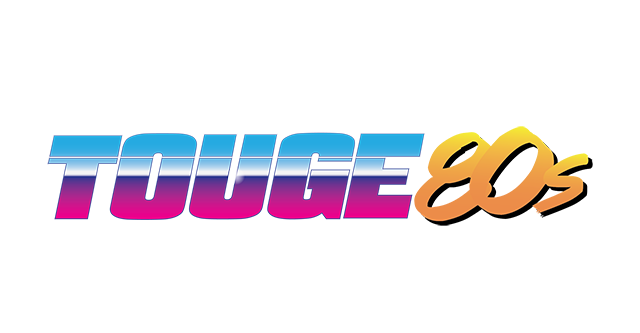

Awesome article guys, looking forward to the new Type R in person. (In February maybe, the Toronto show is then).
That’s a runout version of the old Type-R. I wonder what the new hatch will look like since the ’16 Civic sedan is basically hatchback-shaped as it is.
The stuffed toy rat and roach on the counter of the Daihatsu Tempo adds a humorous touch to the “Roach Coach” bad joke.
Ha, I didn’t even notice those! I think it’s a rat an raccoon or opossum, right?
:Racoon”? no, Japanese Tanuki [Badger to us Gaijin]. maybe but unlikely.
Opossum? Unlikely, no marsupials in Japan, the Opossum is the native marsupial to the North American wildlife “zoo”.
I still opt for an outside joke on the “Roach Coach” and accept that if you have roaches, the rat may well follow.
Great coverage BTW!
A great reference, clearly showing a tanuki is neither a raccoon or a badger, (or a hakubishin or a neko either) can be found here:
http://tokyotanuki.jp/comparison.htm
We’ve got them all running around our house in the country and the lovely wife ensures each is correctly identified…
Alternately, it could be a local Japanese doll version of the English Hedgehog, “Mrs Tiggywinkle” of Winny the Pooh fame. My wife’s sewing basket has a Hedgehog needle keeper that looks very much in profile to the object on the counter!
Wow, first off, yes, I want that 70-series Landy. If I could buy a new one of those Stateside you would see an IsuzuGeek transform into a Toyota geek as fast as I could sign my name.
And hot damn! That Outlander!
I think that name is taken, but I agree!
I forgot to give you the links to my photobucket folders, but – as always – your photos were much better than mine anyway. How did you get such clear shots? Several of my photos have TV crews filming the interiors or doing interviews inside the cars.
A LOT of waiting. You crouch there like a sniper waiting for the perfect shot while your leg slowly cramps. It gets exponentially harder when you have multiple cars in the shot. I hate having people not only in front of the car, but behind the car as well. It ruins the profile when a head is peeking over the roof. I do this for SEMA, JCCS and basically every show… it requires patience but it’s worth it.
When you get to be in your 50s, your knees will curse you for being such a hard-working photographer, Ben (voice of experience)..
the name of the next nissan concept? the IDK
hahaha
Meanwhile the next toyota will be a front-wheel-drive sport compact called the FFS
For some reason, there’s more stuff here than I remember! Great dedication there…
Well I’m not going to travel halfway around the world and not make sure I see everything!
My first trip in a post-Powerball-win world would be to the Tokyo Motor Show! It is, by far, my favorite auto show in the world, even though I’ve never seen it in person.
And, please, Subaru, bring back a WRX wagon / hatchback / 5-door…
I am a huge Lexus fan. The LS is one of the greatest car models ever put into production. Every generation gets better and better. Its really saying something because the LS has been THE BEST full-size luxury car for all of its existence. When I was scrolling through this page, by the 3rd LF-LC picture that the overall length of the car plus the basically trademark greenhouse shape I knew I was looking at the next LS. And it is so sexy. It does to the 460 what the 460 did to the 430. More about it please. I can’t really be bothered with the rest of this nonsense when we have the next gen Lexus LS revealing itself. I know I’m not the only LS fan here either.
Lexuses mesh perfectly with JNCs. They offer everything that’s good that JNCs can’t. Perfect stablemates.